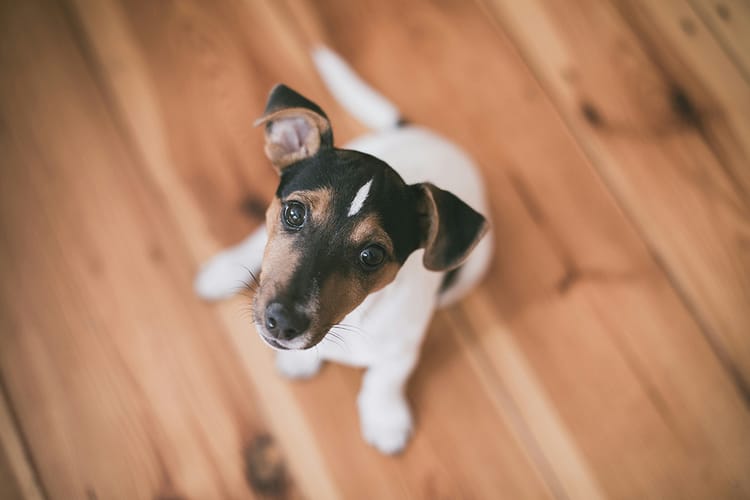Help, my puppy has separation anxiety

After leaving your puppy alone, are you coming home to chewed shoes, shredded toilet paper, trash cans with their contents spilled everywhere or furniture with missing legs or destroyed cushions?
Many peoples’ first instinct when encountering this problem is to declare their dog or puppy has separation anxiety. However, true separation anxiety looks different from a puppy who keeps herself busy when left home alone.
Oftentimes busy puppies need to be safely confined with their own chew toys while you are gone, and taught to settle while you are at home (see tips below).
In contrast, signs of separation anxiety include dogs who:
- Destroy entry and exit points (doors, windows, etc.);
- Destroy or damage a crate;
- Become increasingly agitated — pacing, whining, or even biting — when you attempt to leave;
- Injure themsevles when left alone (bloody nose or paws, for example);
- Refuse to eat even normally tasty treats while you are gone;
- Barking or crying for more than an hour while you are gone (use an audio or video recorder to verify).
If your puppy is exhibiting two or more of these symptoms, contact your veterinarian and a qualified animal behavior consultant right away.
If your puppy shows no anxiety when you are preparing to leave, and a video camera or tape recorder indicates that your puppy settles within 20 minutes after you’ve left, then you can often rule out severe separation anxiety.
To help with “busy puppy” syndrome or mild separation anxiety, try these tips:
- Train your puppy in a play-settle-play pattern. Interrupt playtime with your puppy with frequent “settle” breaks. In the middle of a game, stop playing and ask your puppy to sit or down. At first make these breaks just a few seconds in length, gradually increasing them so he settling for 30 seconds or more for every couple of minutes of play. This helps teach the puppy to control his emotional responses, and also that you aren’t a vending machine of fun, ready to play at every moment.
- Make sure your puppy spends at least one hour of quality time in his crate while you are home. This means he is in his crate with a delicious chew toy while you are busy with other activities. That way, he does not always associate being in the crate with you leaving.
- Leave a radio playing while you are gone, and make sure he has plenty of treats and chew toys. Good treats are an essential part of training your puppy to be home alone — he knows he gets something special to eat when you leave! Also, any uneaten food can be a sign of increasing separation distress and provides a good way to monitor your puppy’s progress.
- Keep your arrivals and departures low-key. Don’t fuss over your puppy before leaving, and wait at least a minute or two when coming home to acknowledge your pup with more than a brief “hello.”
Check out the DVD Crate Games by Susan Garrett, for more help teaching your puppy to be happily crated while you are gone.




